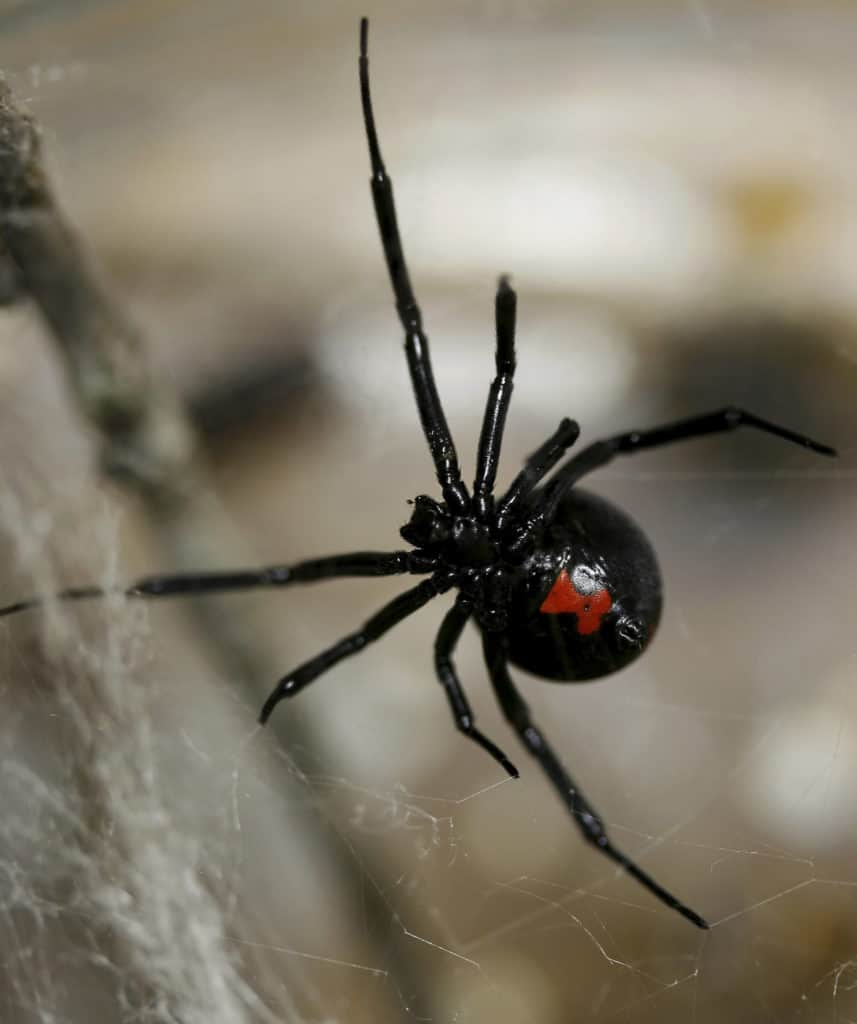Creature Feature

A Scary Creature for Halloween
By Wayne Bierbaum
I like spiders for the job they do, eliminating pesky bugs, but I do not like them crawling on my head or neck after I walk through a web. I really do not like working in my garage and seeing a black spider rush out at me from a crack in the corner.
Several years ago, in early October, I was cleaning my garage and found several black widow spiders. I was surprised by how fast they moved over a short distance. When I lifted a brick, one shot out at me with both front legs raised and fangs exposed. Luckily, I was not bitten and was able to find all of them, plus remove two egg cases. (I was also able to get a few photos of them.)
Black widow spiders epitomize the scary creatures of Halloween. They are poisonous. These dark black arachnids suddenly rush out from the darkness to threaten you with dripping fangs. They also are more aggressive in October because they are protecting their eggs.
I usually let spiders live and just relocate them to a better place, but I did not try to relocate the black widows, as they were hard to corral safely. A year later, after I cleared them from my garage, I discovered several black widow spiders around my street’s stormwater drain and in cracks of the curb. The year after that, I found two under my portable basketball hoop. Luckily, I have not seen any for several years.
Black widow spiders possess neurotoxic venom and are quick to bite. The toxin potentially could kill an infant, but in most cases it just makes an adult wish they had been more careful. Fatalities from black widow spider bites in the U.S. are rare. The poison causes redness and local burning pain. The venom spreads into the bloodstream and causes muscle spasms, tachycardia, diaphoresis, and in infants, respiratory suppression and vascular collapse can occur.
Black widows are relatively small spiders, about 1.25 inches from leg to leg. They prefer to live in cracks within several feet of the ground. They produce a very tough webbing which they place in chaotic straight lines around their home. At night they come out and wait for some bug to run into the fibers and then ambush. Female black widows in Maryland usually have the red hourglass mark. Occasionally it appears as a red or reddish-yellow smudge. The males are thinner and much smaller than the female. The males will have small red dots on the top or underside of the abdomen. The name black widow comes from the fact that the female spiders, after mating, will eat the males.
The best time to find black widows is at night with a flashlight. If you find a disorganized web, you can test the fiber strength with a broom straw. If the fibers break easily it is not a black widow fiber. If the straw bends instead, then watch out for black widows. If you do find one in October, realize that it likely has an egg case. Be careful because they are quite fast over short distances. And no one wants to celebrate Halloween with a painful bite.
